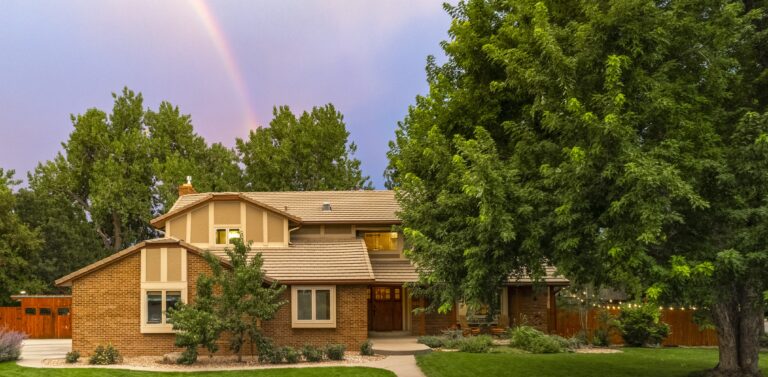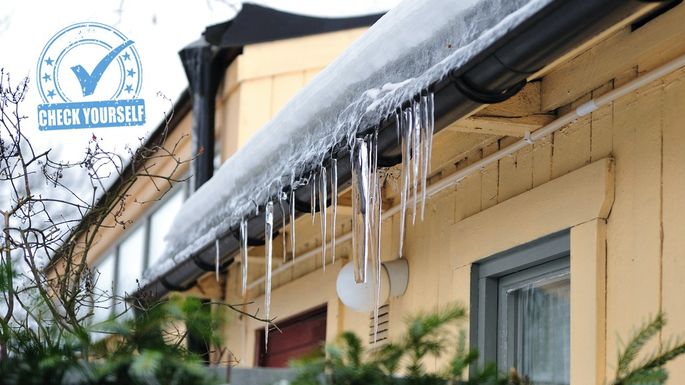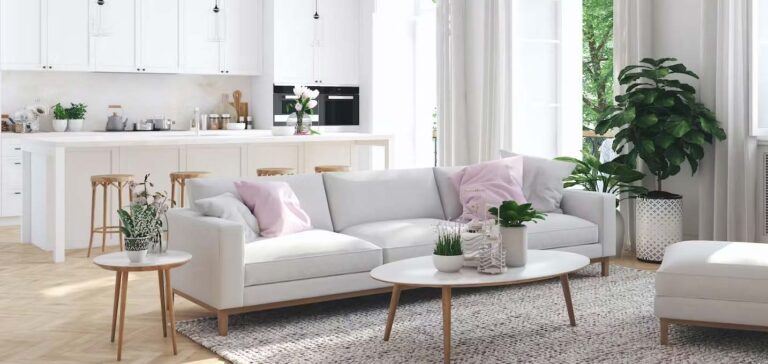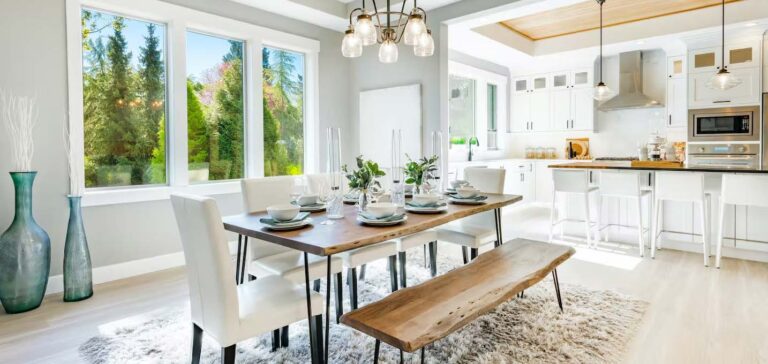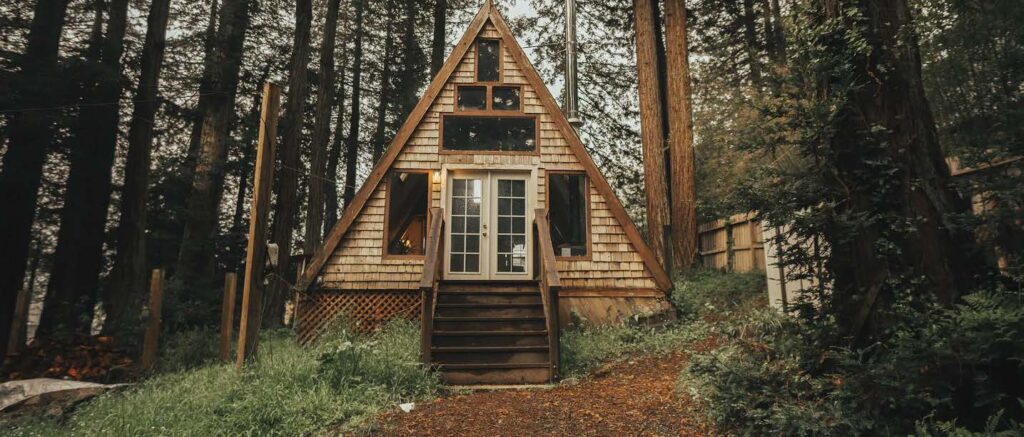
Feeling sentimental for family vacations from years ago? Learn about the history behind beloved A-frame cabins – and why they’re selling faster than you can say “cozy” these days.
Imagine sunlight pouring in from windows, trees as far as the eyes can see, and calm silence, except for the tranquil sound of birds chirping. It’s no surprise people these days are yearning for the cabin lifestyle.
If you’ve taken a trip to the mountains or spent a day lakeside, you’re sure to have seen a classic A-frame cabin nestled in the woods along the way. So why are they so in demand right now?
A brief history of the A-frame
Originating long before the 19th century in parts of Japan, China and Southeast Asia, the A-frame shape has existed around the world for ages. Their relatively simple structure made for quick assembly and adequate shelter, while typically serving a functional purpose, like as a farmhouse or shed.
Ski culture among the Swiss Alps played a role in shifting the A-frame structure from one of practicality to a more vacation-centric purpose.
The first “modern” A-frame home in the U.S. was built in 1934 in a Northern California lake town. Less expensive in building costs, the A-frame home remained a family vacation staple through the 1970s. Companies even began selling DIY kits for people to build the home themselves.
With a sloping roof that nearly (and sometimes does!) touch the ground, its shape is optimal in climates that experience heavy snowfall. The structure is famous for being a simpler build, as its humble in size and often comprised of a modest, compact floorplan.
The modern-day interpretation
It’s no surprise that in 2021, people are brimming with wanderlust. The pandemic lifestyle has vacation-goers and relocators alike searching for a getaway that feels almost off-grid. And coupled with the constant presence of technology, it’s no wonder those who seek out an A-frame admire its symbolism of days gone by, a memento of nature’s tranquility and time spent with loved ones.
While some have been refurbished, many A-frame homes hitting the market still boast their original shag carpeting, an orange-colored kitchen, dark wood paneling or a woodstove – typically freestanding or hovering from the ceiling.
“The reason for the recent popularity of the A-frame is the vintage look. It brings back a lot of memories, especially for millennials and baby boomers, like myself, reminding us of way back in the day when these homes were prevalent,” says Bob Angilella, an agent and team leader with RE/MAX Big Bear in Big Bear Lake, California.
As the mountain regions of California were a hotspot for A-frame homes in the mid-century, post-war construction boom, Angilella – now an expert on the subject – is no stranger to marketing and selling these unique properties. He recently closed the sale of a 1962 A-frame cabin.
“They’re not large,” he explains of the A-frame’s style. “Usually there is one bedroom, a loft and one bathroom – possibly two. So, you can’t pack in a lot of people, but those who enjoy being there are really there for the romanticized, vintage feel of it all. For just a couple of nights, you’re taken back in time with a whole change of atmosphere.”
In Big Bear Lake, Angilella says that though somewhat humble, most A-frame cabins are positioned with coveted views of ski slopes or the luscious valley.
He also says that in today’s hot housing market, these homes are selling fast – whether buyers are looking for an immediate getaway or a renovation project. Knowing the current fascination with the style, too, Angilella says many are seeking out these homes as a possible investment opportunity.
“Buying a cabin [and renting it out] could be a great way to generate income, help pay the bills, help pay the mortgage, and still have a vacation home to escape to,” he explains.
And when it comes to the renovation process, there are details buyers may consider beyond standard cosmetic upgrades. Many A-frames lasting from the 1970s are uninsulated – and with their high ceilings, the interior can be anywhere from drafty to downright cold.
For those refurbishing an A-frame home, adequate insulation will likely be a top priority for the home to be used year-round.
As they aren’t built as often anymore, A-frames are harder to come by – and when they hit the market, there’s sure to be quite the buzz surrounding them. Whether it’s the fond memories they resurface or the quality time in nature they provide, these nostalgic oases continue to delight those who visit decades after their popularization.
If you’re longing to toss on a record and relax by the circular woodstove, or get outside and disconnect from reality, keep your eyes peeled for a rare listing of an A-frame cabin.
Article originally appeared on RE/MAX.com.

